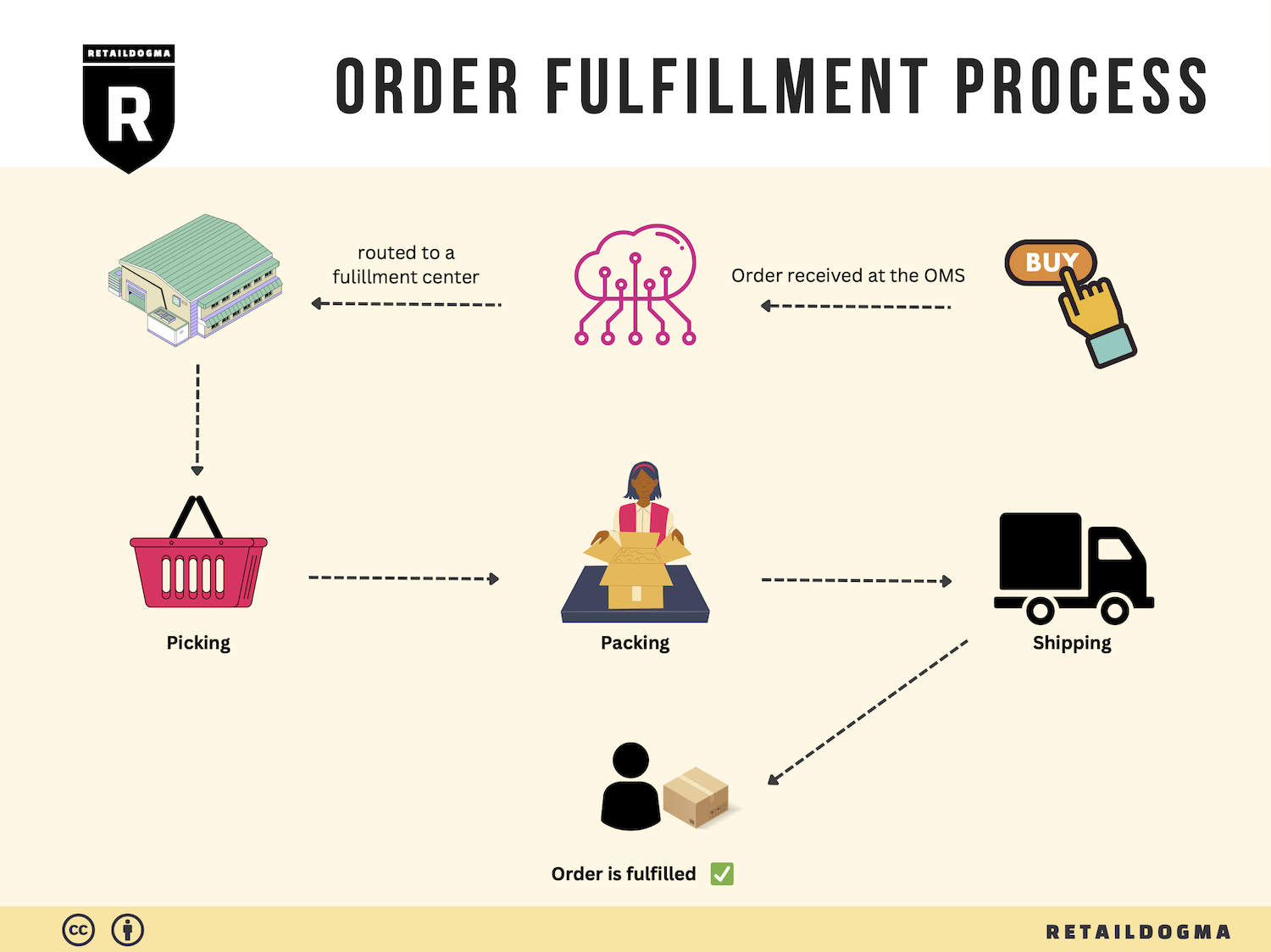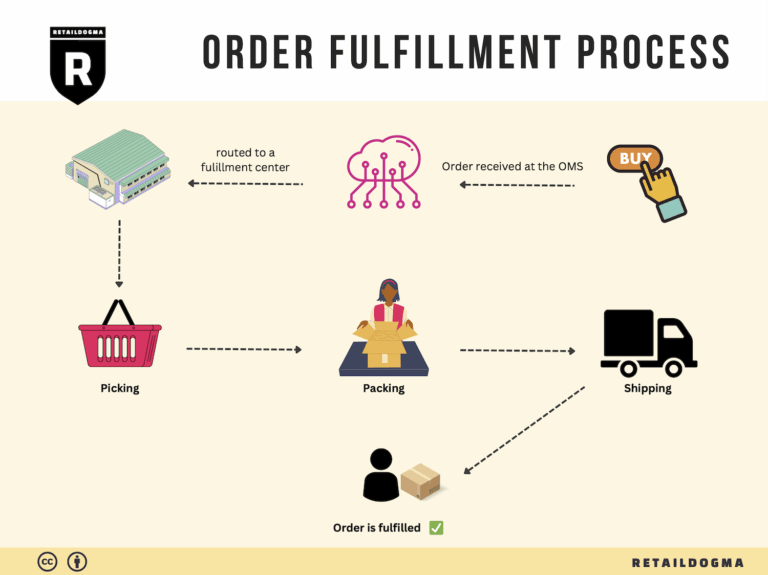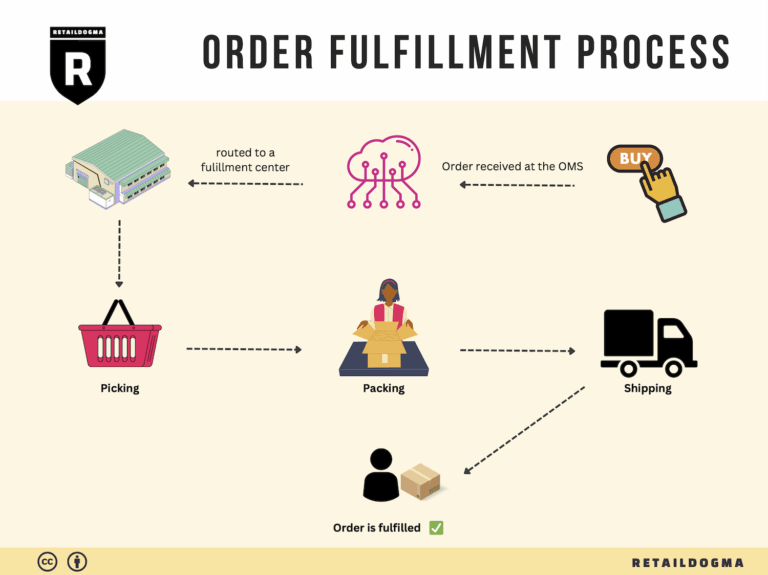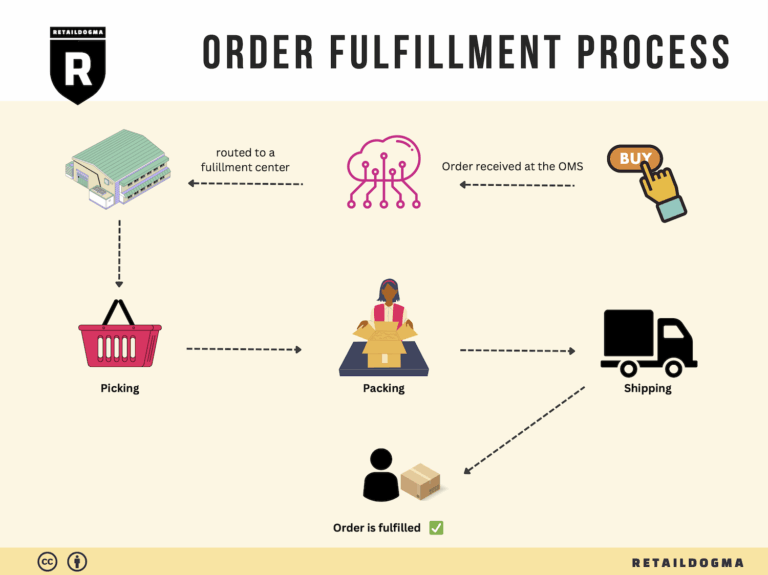Ecommerce Fulfillment Services: The Ultimate Guide (2025)
What is E-commerce Fulfillment? An Introduction for Growing Businesses
Understanding E-commerce Fulfillment
As an e-commerce business owner, you may find yourself grappling with the complexities of packing and shipping orders, especially during peak seasons. The challenge of managing logistics can often feel overwhelming, diverting your focus away from scaling your business. At its core, e-commerce fulfillment is the process of getting a product from your inventory into the hands of your customer. This involves a series of steps, including storage, order processing, packaging, and shipping.
In this guide, we will delve into the various models of e-commerce fulfillment that can help streamline your operations. You’ll learn about Third-Party Logistics (3PL) and Fulfillment by Amazon (FBA), both of which offer distinct advantages depending on your business needs. We will outline the core services offered by fulfillment centers, such as inventory management, order tracking, and returns processing, which are critical for maintaining customer satisfaction and operational efficiency.
Choosing the right fulfillment partner is a pivotal decision for any growing business. This guide will provide you with practical insights on what to look for in a partner, including technology integration, scalability, and customer service capabilities. We will also discuss pricing structures, helping you to understand how to budget for fulfillment costs and make informed decisions that align with your financial goals.
Ultimately, this guide aims to empower you to make smart, strategic decisions about your logistics operations. By understanding the intricacies of e-commerce fulfillment, you can position your business for growth, ensuring that your products reach customers quickly and efficiently. Whether you’re a startup or an established brand looking to enhance your logistics, the insights provided here will be invaluable as you navigate the complexities of fulfillment and scale your sales effectively.
What You’ll Learn In This Guide
- What is E-commerce Fulfillment? An Introduction for Growing Businesses
- The Order Fulfillment Process: From ‘Buy’ Button to Customer’s Door
- Comparing Fulfillment Models: In-House vs. 3PL vs. Dropshipping
- A Deep Dive into Amazon FBA: Pros, Cons, and Who It’s For
- Core Services Offered by Fulfillment Centers
- How to Choose a Fulfillment Partner: A 6-Point Checklist
- Understanding Fulfillment Pricing: A Breakdown of Common Fees
- Frequently Asked Questions (FAQs) about Fulfillment
- Conclusion: Is Outsourcing Fulfillment the Right Move for Your Business?
- Important Disclaimer
The Order Fulfillment Process: From ‘Buy’ Button to Customer’s Door
1. Receiving Inventory
The first step in the order fulfillment process is receiving inventory at the fulfillment center. When products arrive at a facility like Amazon’s JFK8, they undergo a thorough inspection to ensure they meet quality standards and match the purchase orders. This involves checking quantities, inspecting for damages, and verifying that the correct items have been delivered.
This step is crucial for several reasons. First, it ensures that the inventory on hand is accurate, which directly affects the ability to fulfill customer orders efficiently. Any discrepancies can lead to stockouts or delays in order processing, ultimately impacting customer satisfaction. A key term associated with this step is SKU (Stock Keeping Unit), which is used to track and manage inventory levels. By accurately recording SKUs upon receipt, businesses can maintain a streamlined inventory management system that helps in forecasting demand and minimizing excess stock.
2. Warehouse Storage
Once the inventory is received and verified, the next step is warehouse storage. This involves strategically placing products within the fulfillment center to optimize space and accessibility. In a facility like JFK8, which utilizes advanced technology and robotic systems, items are often stored on shelves that can be accessed by robotic drive units. This arrangement maximizes the use of vertical space and allows for more efficient retrieval.
The importance of effective warehouse storage cannot be overstated. Proper organization reduces the time spent searching for items during the order picking process, leading to faster fulfillment times. Additionally, efficient storage minimizes the risk of product damage and ensures that items are stored in conditions that preserve their quality. A key term here is bin location, which refers to the specific spot within the warehouse where an item is stored. Using a systematic bin location strategy can significantly enhance operational efficiency.
3. Order Picking
After the inventory is stored, the next step is order picking. When a customer places an order, the fulfillment center generates a pick list, which is a detailed list of items that need to be gathered for that particular order. In a high-volume facility like JFK8, this process is often supported by both human workers and robotic systems. Robotic drive units transport shelves to picking stations, where employees can efficiently retrieve the items.
Order picking is a critical step in the fulfillment process as it directly influences the accuracy and speed of order fulfillment. Errors during this stage can lead to customer dissatisfaction, increased return rates, and additional operational costs. A key term associated with order picking is pick-to-light systems, which use lights to indicate where items are located, guiding pickers to the correct locations quickly. Implementing such technology can dramatically improve picking efficiency and accuracy.
4. Order Packing
Once the items have been picked, they are transported to the packing station. In this stage, items are carefully packed into boxes or containers, ensuring that they are secure for transit. This process may involve the use of packing materials, such as bubble wrap or packing peanuts, to protect fragile items. The packing team also ensures that the correct shipping labels and documentation are included with each order.

The significance of the packing stage lies in its impact on customer experience. Well-packed orders reduce the likelihood of damage during shipping, leading to higher customer satisfaction and lower return rates. Additionally, efficient packing can help minimize shipping costs by optimizing the size and weight of packages. A relevant term here is dimensional weight pricing, which is a shipping method that considers both the weight and dimensions of a package to determine shipping costs. Understanding and applying this concept can help e-commerce businesses manage their shipping expenses effectively.
5. Shipping & Delivery
The final step in the order fulfillment process is shipping and delivery. Once orders are packed, they are handed over to shipping carriers for delivery to the customer’s doorstep. Facilities like JFK8 are strategically located to ensure that they can provide fast shipping options, including same-day or next-day delivery in many cases.
This step is crucial as it represents the final interaction between the business and the customer. Timely delivery can significantly enhance customer satisfaction and loyalty, while delays can lead to negative reviews and lost business. A key term associated with this stage is last-mile delivery, which refers to the final leg of the delivery journey from the fulfillment center to the customer’s location. Investing in efficient last-mile delivery solutions can help e-commerce businesses scale their operations and meet growing customer expectations for rapid service.
By understanding and optimizing each of these five steps, e-commerce businesses can enhance their order fulfillment process, leading to improved efficiency, reduced costs, and higher levels of customer satisfaction.
Comparing Fulfillment Models: In-House vs. 3PL vs. Dropshipping
Fulfillment Models Comparison
| Model | Who Handles Inventory | Best For (Business Stage) | Key Advantage | Key Disadvantage |
|---|---|---|---|---|
| In-House Fulfillment | The business itself | Established businesses with stable sales | Complete control over inventory and processes | High overhead costs and resource-intensive |
| Third-Party Logistics (3PL) | A third-party logistics provider | Growing businesses looking to scale | Flexibility and scalability without heavy investment | Less control over inventory and fulfillment quality |
| Dropshipping | Suppliers or manufacturers | Startups and small businesses | Low upfront costs and minimal risk | Lower profit margins and reliance on supplier reliability |
In-House Fulfillment
In-house fulfillment involves managing all aspects of the storage, packing, and shipping of products within the company’s own facilities. This model is best suited for established businesses with a stable sales volume and sufficient resources to invest in warehousing, staffing, and logistics technology. The primary advantage of in-house fulfillment is the complete control it offers over inventory management, fulfillment processes, and customer service. Businesses can customize their operations to align perfectly with their brand values and customer expectations, ensuring high levels of quality and reliability.
However, in-house fulfillment comes with significant disadvantages, primarily related to the high overhead costs associated with maintaining warehouse space, purchasing equipment, and employing staff. As demand fluctuates, businesses may find themselves overstaffed or under-resourced, leading to inefficiencies. Moreover, the need for continuous investment in technology and training can strain finances and divert focus from core business activities.
Third-Party Logistics (3PL)
Third-party logistics (3PL) involves outsourcing fulfillment operations to a specialized logistics provider. This model is particularly beneficial for growing businesses looking to scale their operations without the burden of significant upfront investment in infrastructure. 3PL providers manage inventory storage, order processing, and shipping, allowing businesses to focus on sales and marketing. The key advantage of this model is its flexibility; businesses can easily scale their logistics operations up or down based on demand without incurring substantial costs.
However, the reliance on a third-party provider means that businesses may have less control over their inventory and fulfillment processes. This can lead to issues with quality, as the 3PL may not adhere to the same standards as the business would if managing in-house. Additionally, there may be hidden fees for services that can erode profit margins, and the business may face challenges in communication and coordination, especially if the 3PL operates in a different region.
Dropshipping
Dropshipping is a fulfillment model where the retailer does not hold any inventory; instead, when a customer places an order, the retailer purchases the item from a third-party supplier who then ships it directly to the customer. This model is ideal for startups and small businesses with limited resources, as it requires minimal upfront investment and eliminates the need for warehousing and inventory management. The primary advantage of dropshipping is the low risk associated with unsold inventory, allowing entrepreneurs to test product ideas without significant financial commitment.
Despite its benefits, dropshipping comes with notable challenges. Profit margins can be lower compared to other fulfillment models, as suppliers typically charge retailers a wholesale price that allows them to retain a portion of the sale. Furthermore, businesses that rely on dropshipping are heavily dependent on their suppliers for inventory quality, fulfillment speed, and reliability. Any delays or issues on the supplier’s end can lead to customer dissatisfaction, harming the retailer’s brand reputation. Additionally, the lack of control over inventory can make it difficult to manage stock levels and fulfill orders accurately, particularly during peak seasons.
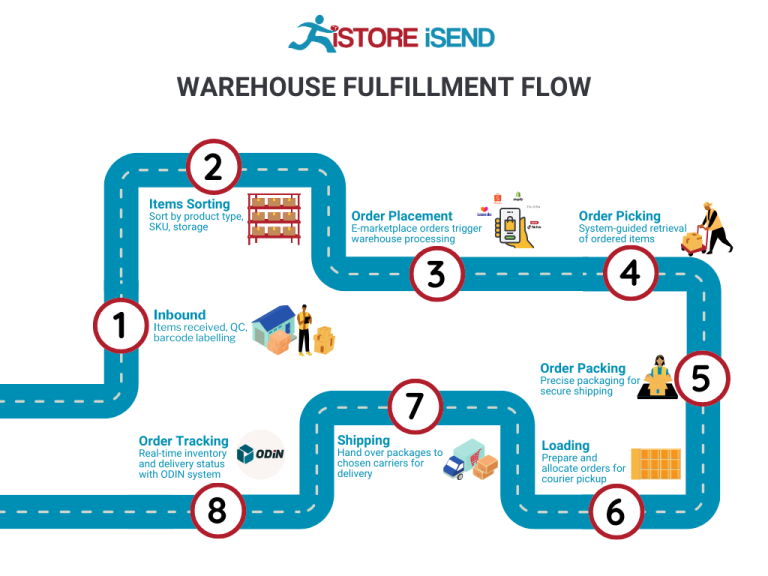
In summary, each fulfillment model presents unique advantages and challenges that align with different business stages and goals. Understanding these distinctions is crucial for e-commerce business owners and operations managers as they seek to scale their logistics and sales effectively.
A Deep Dive into Amazon FBA: Pros, Cons, and Who It’s For
Understanding Fulfillment by Amazon (FBA)
Fulfillment by Amazon (FBA) is a service provided by Amazon that allows sellers to store their products in Amazon’s fulfillment centers. Amazon takes care of storage, packaging, and shipping of these products to customers, leveraging its vast logistics network. This service not only simplifies the logistics for sellers but also enhances their product visibility on Amazon’s platform, as FBA products are often prioritized in search results.
How FBA Works
-
Product Listing: Sellers first list their products on Amazon and choose which items they want to fulfill through FBA.
-
Shipping Inventory: Sellers then ship their products to Amazon’s fulfillment centers, like the JFK8 facility in Staten Island, NY. This facility, equipped with advanced technology and robotics, helps streamline the storage and order fulfillment processes.
-
Storage and Management: Once the products arrive at the fulfillment center, they are stored until an order is placed. Amazon manages inventory levels and provides sellers with tools to track stock and sales.
-
Order Processing: When a customer places an order for a product fulfilled by FBA, Amazon picks, packs, and ships the item directly to the customer. This process is highly efficient, often allowing for same-day or next-day delivery, especially from strategically located centers like JFK8.
-
Customer Service and Returns: Amazon also handles customer service inquiries and returns for FBA products, relieving sellers of these responsibilities.

Pros of Using FBA
-
Prime Eligibility: Products fulfilled through FBA are eligible for Amazon Prime, which attracts a significant number of loyal customers seeking fast shipping options. This can lead to increased sales and higher visibility in search results.
-
Customer Trust: Customers tend to trust Amazon’s handling of orders, which can enhance the credibility of your products. The assurance of reliable service and customer support can lead to higher conversion rates.
-
Multi-Channel Fulfillment: FBA allows sellers to fulfill orders from other sales channels (like their own website or other e-commerce platforms) using Amazon’s logistics. This can streamline operations and reduce complexity.
-
Scalability: FBA enables sellers to scale their businesses without the need for significant investment in warehousing and logistics infrastructure. With Amazon managing the fulfillment, sellers can focus on marketing and sales.
-
Advanced Logistics: Amazon’s sophisticated technology, including AI-driven inventory management and robotics at facilities like JFK8, allows for efficient order processing and inventory management, reducing human error.
Cons of Using FBA
-
High Fees: While FBA provides many benefits, it comes at a cost. Sellers must pay storage fees for their products, as well as fulfillment fees for each order processed. These fees can eat into profit margins, especially for lower-priced items.
-
Strict Inventory Rules: Amazon has specific rules regarding inventory management, including limits on how much inventory can be stored and requirements for packaging and labeling. Non-compliance can result in additional fees or penalties.
-
Commingling Risks: FBA products may be commingled with inventory from other sellers, which can lead to challenges in tracking and managing returns. If a customer returns a product, you may not receive the exact item you shipped, which can complicate quality control.
-
Limited Control: Sellers relinquish some control over their inventory and fulfillment processes. If issues arise with Amazon’s handling of orders or customer service, it can reflect poorly on the seller, despite being outside their control.
-
Dependency on Amazon: Relying heavily on FBA can create a dependency on Amazon’s platform. Changes in Amazon’s policies, fees, or algorithms can significantly impact a seller’s business operations and profitability.
Who is FBA Best For?
FBA is particularly suited for:
-
Small to Medium-Sized Businesses: Entrepreneurs who want to focus on sales and marketing rather than logistics can benefit significantly from FBA’s streamlined processes.
-
E-commerce Startups: Startups can leverage FBA to gain quick access to Amazon’s customer base without the need for upfront investments in warehousing and shipping.
-
Sellers with High Volume: Businesses that anticipate high sales volumes can benefit from the economies of scale that FBA offers, as the costs per unit decrease with higher sales.
-
Brands Seeking National Reach: For brands looking to expand their reach beyond local markets, FBA provides the infrastructure to ship products quickly across the country.
-
Businesses with Seasonal Demand: Sellers experiencing spikes in demand during certain seasons can use FBA to manage inventory fluctuations effectively without overcommitting to storage space.
In conclusion, while FBA offers numerous advantages that can facilitate growth and enhance customer satisfaction, it also comes with challenges that require careful consideration. Businesses must weigh these pros and cons based on their unique needs and operational capabilities to determine if FBA is the right choice for scaling their e-commerce efforts.
Core Services Offered by Fulfillment Centers
Inventory Management & Warehousing
Inventory management and warehousing form the backbone of effective fulfillment operations. Fulfillment centers, such as the JFK8 facility, offer extensive storage solutions that allow e-commerce businesses to keep their products organized and accessible. These centers utilize sophisticated inventory management systems that track stock levels, product locations, and turnover rates in real time.
Benefits:
1. Optimized Storage: By leveraging advanced technology, fulfillment centers can maximize space efficiency, often accommodating a larger inventory than traditional warehousing solutions. This is particularly advantageous for e-commerce businesses with fluctuating demand patterns.
-
Reduced Overhead Costs: Outsourcing warehousing to a fulfillment center eliminates the need for businesses to invest in their own storage facilities, reducing overhead costs associated with rent, utilities, and maintenance.
-
Real-Time Data Access: Businesses gain access to real-time inventory data, enabling them to make informed decisions regarding restocking and inventory turnover. This visibility helps prevent stockouts or overstock situations, both of which can negatively impact sales and customer satisfaction.
Pick and Pack Services
Pick and pack services are crucial for ensuring that orders are fulfilled accurately and efficiently. This process involves selecting items from inventory (picking) and then packing them for shipment (packing). Fulfillment centers like JFK8 employ a combination of automated systems and skilled workers to handle high volumes of orders with speed and precision.
Benefits:
1. Speed and Efficiency: Fulfillment centers are designed to handle large volumes of orders quickly. The integration of robotics and AI in facilities like JFK8 enables the rapid picking and packing of items, significantly reducing order processing times.
-
Accuracy: Advanced technology minimizes human error during the picking process. Fulfillment centers often utilize barcode scanning and automated systems to ensure that the correct items are picked and packed, which is crucial for maintaining customer trust and satisfaction.
-
Scalability: As e-commerce businesses grow, their order volumes can fluctuate significantly. Fulfillment centers provide the flexibility to scale operations up or down based on demand, allowing businesses to adapt without incurring additional costs.
Kitting and Assembly
Kitting and assembly services involve combining multiple products into a single package or assembling products before they are shipped. This service is particularly useful for businesses that offer bundled products or complex items requiring assembly before delivery. Fulfillment centers are equipped to handle these processes efficiently.
Benefits:
1. Enhanced Product Offering: By offering kitting and assembly services, e-commerce businesses can create unique product bundles or kits that provide added value to customers. This can lead to increased sales and improved customer satisfaction.
-
Streamlined Operations: Outsourcing kitting and assembly to a fulfillment center allows businesses to focus on their core competencies, such as marketing and product development, rather than handling labor-intensive tasks in-house.
-
Cost-Effective Solutions: Fulfillment centers often have the resources and expertise to assemble products at a lower cost than businesses could achieve independently. This cost efficiency can translate to higher margins for e-commerce companies.
Returns Management (Reverse Logistics)
Returns management, also known as reverse logistics, is an essential service offered by fulfillment centers that ensures the smooth handling of product returns. This process involves receiving returned items, inspecting them, restocking them if possible, and managing the associated logistics.
Benefits:
1. Improved Customer Experience: Efficient returns management is critical for customer satisfaction. Fulfillment centers streamline the returns process, allowing customers to return items easily and quickly, which can enhance brand loyalty.
-
Cost Reduction: Properly managing returns can help businesses reduce losses associated with returned merchandise. Fulfillment centers can assess the condition of returned items and determine whether they can be restocked or need to be disposed of, thereby minimizing financial impacts.
-
Data Insights: Analyzing return data can provide valuable insights into customer behavior and product quality issues. Fulfillment centers often track return reasons and patterns, enabling e-commerce businesses to make data-driven decisions to improve their offerings and reduce return rates.
In summary, fulfillment centers like JFK8 offer a comprehensive suite of services that enable e-commerce businesses to scale operations effectively. By outsourcing inventory management, pick and pack services, kitting and assembly, and returns management, businesses can enhance efficiency, reduce costs, and improve customer satisfaction, all of which are crucial for sustainable growth in the competitive e-commerce landscape.
How to Choose a Fulfillment Partner: A 6-Point Checklist
Location & Warehouse Network
When selecting a fulfillment partner, the geographical location of their warehouses is crucial. Proximity to major markets can significantly reduce shipping times and costs, which is essential for maintaining customer satisfaction.
Why It’s Important:
– Reducing shipping times enhances the customer experience and can lead to higher retention rates.
– A well-distributed warehouse network allows for more flexible shipping options and can facilitate faster last-mile delivery.
Questions to Ask:
1. Where are your warehouses located, and how does that align with our target markets?
2. What is your average shipping time from each warehouse to major customer locations?
3. Do you have a plan for expanding your warehouse network in the future?
Technology & Integrations
In today’s digital age, the technology stack of a fulfillment partner can make or break your operational efficiency. Look for partners that utilize advanced logistics technology and can integrate seamlessly with your existing systems.
Why It’s Important:
– Efficient technology can streamline inventory management, order processing, and shipping logistics.
– Integrations with e-commerce platforms (like Shopify, WooCommerce, or Amazon) can automate many processes, reducing manual errors and saving time.
Questions to Ask:
1. What technology do you use for inventory management and order fulfillment?
2. Can your systems integrate with our existing e-commerce platforms and ERP systems?
3. How do you ensure data security and compliance with regulations?
Specializations (e.g., Cold Storage, Oversized Items)
Not all fulfillment centers are equipped to handle every type of product. If your business deals with specialized items, such as perishables or oversized goods, ensure your partner has the necessary capabilities.
Why It’s Important:
– Specialized handling and storage can prevent product damage and ensure compliance with safety regulations.
– A partner with expertise in your product category can offer better solutions and efficiencies.
Questions to Ask:
1. What types of specialized services do you offer (e.g., cold storage, fragile item handling)?
2. Can you accommodate unique packaging requirements for our products?
3. What experience do you have with businesses in our industry?
Scalability & Capacity
As your business grows, so too will your fulfillment needs. It’s essential to choose a partner that can scale operations in line with your growth trajectory.
Why It’s Important:
– A partner that can scale quickly will help you avoid disruptions during peak seasons or sudden demand spikes.
– Flexibility in capacity can lead to cost savings by avoiding overpaying for unused space during slower periods.
Questions to Ask:
1. How do you handle capacity during peak seasons or unexpected surges in demand?
2. What is your current capacity, and how quickly can you scale up if needed?
3. Do you have any minimum order requirements or restrictions on scalability?
Pricing and Contracts
Understanding the pricing structure and contract terms is essential to avoid unexpected costs that can impact your bottom line. Transparency in pricing ensures you can budget accurately for fulfillment services.
Why It’s Important:
– Hidden fees can significantly increase operational costs, which may erode your profit margins.
– Clear contract terms help establish expectations and protect your business interests.
Questions to Ask:
1. What is your pricing model (e.g., per order, per item, monthly fees)?
2. Are there any additional fees for services like storage, packaging, or returns?
3. Can you provide sample contracts for review, and what are the terms for contract termination?
Customer Support & Reviews
A reliable customer support system can be invaluable, especially during critical operational periods. Additionally, understanding the experiences of other businesses can provide insights into the fulfillment partner’s reliability.
Why It’s Important:
– Quality customer support can help resolve issues quickly, minimizing disruptions to your operations.
– Positive reviews and testimonials from other clients can indicate a partner’s reliability and performance.
Questions to Ask:
1. What level of customer support do you provide (e.g., dedicated account managers, 24/7 support)?
2. How do you handle issues such as order errors or shipping delays?
3. Can you provide references or case studies from businesses similar to ours?
Conclusion
Choosing the right fulfillment partner is a critical decision that can significantly impact your e-commerce operations. By carefully evaluating potential partners against this checklist, you can ensure that your business is set up for success as it scales. Prioritize your unique needs and ask the right questions to find a partner that aligns with your business goals.
Understanding Fulfillment Pricing: A Breakdown of Common Fees
Initial Setup Fees
When engaging with a fulfillment center like Amazon JFK8, businesses often encounter initial setup fees. These fees are charged to establish your account and integrate your inventory into the fulfillment system. The setup process typically involves:
- Account Creation: Establishing your business profile and payment methods.
- Inventory Onboarding: Uploading product listings, descriptions, and images.
- System Configuration: Setting parameters for order processing and inventory management.
Initial setup fees vary based on the complexity of your product catalog and the fulfillment provider’s policies. Some providers may waive these fees as part of a promotional offer or for businesses committing to long-term contracts, so it’s essential to inquire about potential waivers.
Receiving Fees
Receiving fees are incurred when your products arrive at the fulfillment center. These fees cover the labor and equipment required to unload, inspect, and store your inventory. The calculation of receiving fees typically depends on:
- Volume of Inventory: The more items you send, the higher the total receiving fee, as it requires additional time and resources.
- Type of Products: Some products may require special handling (e.g., fragile items) and thus incur higher fees.
Receiving fees can also include charges for any discrepancies in shipment, such as missing items or incorrect quantities. To minimize these fees, ensure that shipments are accurately labeled and packed according to the fulfillment center’s guidelines.
Storage Fees (per pallet/bin)
Storage fees are charged based on the amount of space your inventory occupies within the fulfillment center. This fee is generally calculated on a per-pallet or per-bin basis, depending on how your products are stored. Factors influencing storage fees include:
- Duration of Storage: Fees are typically billed monthly, and the longer your inventory remains in storage, the more you will pay. Some fulfillment centers also charge additional long-term storage fees if products remain unsold for extended periods.
- Size and Weight of Products: Larger or heavier items may occupy more space and incur higher storage fees.
To manage storage costs effectively, consider implementing just-in-time inventory practices or optimizing your product assortment to reduce excess stock.
Pick & Pack Fees (per item/order)
Pick and pack fees are charged for the labor involved in retrieving items from storage and preparing them for shipment. These fees can vary based on:
- Number of Items per Order: Generally, the more items included in an order, the higher the pick and pack fee. Some providers charge a flat fee per order, while others may charge per item.
- Complexity of Packing: If your products require special packaging materials or assembly, this may lead to increased fees.
Understanding your average order size and the typical number of items per order can help you estimate pick and pack fees and strategize on how to optimize order fulfillment processes to reduce costs.
Shipping Fees
Shipping fees are a crucial aspect of fulfillment pricing and can significantly impact your bottom line. These fees cover the cost of transporting your orders to customers and are influenced by several factors:
- Shipping Method: Different shipping options (e.g., standard, expedited, overnight) come with varying costs. The choice between carriers (e.g., UPS, FedEx, USPS) can also affect pricing.
- Destination: Shipping costs typically increase with distance. Orders shipped to remote areas may incur additional surcharges.
- Weight and Dimensions of Packages: Heavier and larger packages generally incur higher shipping fees. Many fulfillment centers use dimensional weight pricing, which considers the size of the package rather than just its weight.
To optimize shipping costs, consider using a mix of shipping methods based on customer needs and order size. Additionally, negotiating rates with carriers or leveraging the fulfillment center’s established partnerships can lead to savings.
Tips for Getting an Accurate Quote
To ensure you receive an accurate quote from a fulfillment center, follow these practical steps:
- Provide Detailed Information: Share specific details about your products, including dimensions, weights, and any special handling requirements.
- Clarify Volume Expectations: Estimate your monthly order volume and peak seasons to help the provider understand your needs better.
- Ask About Additional Fees: Inquire about any potential hidden fees that may apply, such as long-term storage fees or returns processing fees.
- Compare Providers: Obtain quotes from multiple fulfillment centers to compare pricing structures, services, and capabilities.
- Negotiate Terms: Don’t hesitate to discuss terms and fees, especially if you are planning to scale your business or commit to a long-term contract.
By understanding these common fulfillment pricing models and following these tips, you can make informed decisions that align with your business goals and budget constraints.
Frequently Asked Questions (FAQs) about Fulfillment
1. What is the JFK8 Amazon Fulfillment Center?
The JFK8 Fulfillment Center is a state-of-the-art facility located in Staten Island, NY, spanning 855,000 square feet. It serves as a key hub in Amazon’s logistics network, specializing in the storage, packing, and shipping of a wide variety of products. The center utilizes advanced technology, including robotic systems, to enhance efficiency and meet the demands of e-commerce.
2. How does the JFK8 Fulfillment Center utilize technology?
JFK8 employs a combination of robotic drive units and artificial intelligence to optimize order fulfillment. These robots work alongside over 2,700 human employees, moving packages and inventory efficiently throughout the facility. This integration allows the center to process over one million orders a day, significantly increasing operational speed compared to traditional fulfillment centers.
3. What is the difference between a warehouse and a fulfillment center?
A warehouse primarily focuses on storing goods for long periods, whereas a fulfillment center is designed for rapid order processing and shipping. Fulfillment centers not only store products but also handle the packaging and shipping of items directly to customers, making them integral to e-commerce operations.
4. What services does the JFK8 Fulfillment Center offer?
The JFK8 center provides comprehensive fulfillment services, including inventory storage, order processing, packaging, and shipping. It also supports returns management, ensuring a seamless experience for both sellers and customers.
5. What is a 3PL, and how does it relate to fulfillment centers?
A Third-Party Logistics (3PL) provider offers outsourced logistics services, including warehousing, transportation, and order fulfillment. Fulfillment centers like JFK8 can function as a 3PL, allowing e-commerce businesses to leverage their infrastructure and technology for efficient order management and distribution.
6. How much do fulfillment services cost?
Fulfillment service costs can vary widely based on factors such as order volume, storage needs, and specific service requirements. Generally, businesses can expect to pay for storage space, order processing fees, and shipping costs. It’s advisable to obtain quotes from various fulfillment centers to compare rates and services.
7. What are the benefits of using the JFK8 Fulfillment Center for my e-commerce business?
Utilizing the JFK8 Fulfillment Center can significantly enhance your business’s efficiency and customer satisfaction. Benefits include faster shipping times due to its strategic location, access to advanced technology for order processing, and reduced operational overhead by outsourcing logistics.
8. How can I get my products into the JFK8 Fulfillment Center?
To store and fulfill your products at JFK8, you must first register as an Amazon seller. Once approved, you can create shipments through Amazon Seller Central, specifying JFK8 as the destination fulfillment center. Amazon will provide guidelines on labeling and packaging your products for efficient handling.
9. What is the typical delivery speed from the JFK8 Fulfillment Center?
Orders fulfilled from the JFK8 center can often be delivered within one to two days, depending on the shipping method chosen and the customer’s location. The facility’s proximity to a dense population area allows for expedited last-mile delivery services.
10. How does the JFK8 Fulfillment Center handle peak seasons, like holidays?
During peak seasons, JFK8 ramps up operations by leveraging its robotic systems and workforce to handle increased order volumes. The integration of technology allows for flexible scaling of operations, ensuring that the facility can maintain high fulfillment speeds and accuracy even during busy periods.
Conclusion: Is Outsourcing Fulfillment the Right Move for Your Business?
Evaluating the Benefits of Outsourcing Fulfillment
Outsourcing fulfillment can be a transformative strategy for e-commerce businesses aiming to scale effectively. By leveraging a fulfillment partner, you can save valuable time and resources, allowing you to focus on core business activities such as marketing and product development. With automated processes and advanced technology, fulfillment centers like Amazon’s JFK8 can handle inventory management, order processing, and shipping, thus accelerating your operational efficiency.
Scalability is another significant advantage. As your business grows, fulfilling orders can become increasingly complex. A reliable fulfillment partner offers the flexibility to adjust to seasonal demands, handle larger volumes, and expand into new markets without the need for substantial upfront investments in infrastructure. This adaptability is crucial in today’s fast-paced e-commerce landscape, where consumer expectations for quick and accurate deliveries continue to rise.
Furthermore, partnering with experts in fulfillment allows you to benefit from their specialized knowledge and resources. These facilities employ advanced technologies, such as robotics and AI, to streamline logistics, optimize storage, and enhance accuracy in order fulfillment. This not only improves service quality but also contributes to customer satisfaction, a vital component for retaining and growing your customer base.
However, the success of outsourcing fulfillment hinges on selecting the right partner. Consider factors such as reliability, technology capabilities, and alignment with your business goals. A thorough audit of your current shipping processes can help you identify inefficiencies and determine whether a fulfillment partner is the right next step for your business.
Take Action Today
Evaluate your current logistics strategy and explore whether a fulfillment service could streamline your operations and support your growth objectives. The right partner could be the key to unlocking your business’s full potential.
Important Disclaimer
⚠️ Important Disclaimer
The information in this guide is for educational purposes. Fulfillment services, pricing, and platform features change frequently. Always conduct your own due diligence and consult with providers directly before making business decisions.
